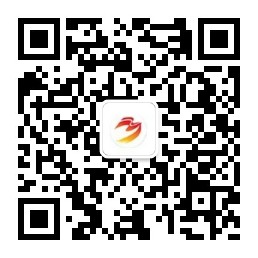今年的阅读理解题结构、形式与去年一样,所选
素材有以下特点:
1. 所选语篇与中学生或青少年的学习和生活有直接关联,符合中学生的知识和经验水平,如:
政府及相关部门为学生和年轻人提供暑期工作的公告、如何帮助学生提高自信心、个体受欢迎程度对青少年成长的影响等;
2. 所选语篇能够帮助中学生获得新的知识或经验;
3. 所选语篇体裁多样,且结构相对完整,有利于给学生带来更加真实的阅读体验。
根据今年以及往年的阅读理解考题来看,主要是通过阅读后所设立的多项选择题进行检测的,测试学生的阅读能力要求主要包括:
1.读材料的主旨和大意,以及用以说明主旨和大意的事实和细节(包括根据上下文推断生词的词义)
2.既理解具体的事实,也理解抽象的概念;
3.既理解字面的意思,也理解深层的含义,包括作者的态度,意图等;
4.既理解某句,某段的含义,也理解全篇的逻辑关系,并据此进行推理和判断;
5.既能根据所提供的信息去理解,也能结合中学生应有的常识去理解。
选择题有四种题型:
• 1.细节理解题;
• 2.主旨大意题;
• 3.猜测词义题;
• 4.推理判断题。
Types of Questions in Reading Section (2019) (A)
21.What is special about Summer Company?
22.What is the age range required by Stewardship Youth Ranger Program?
23.Which program favors the disabled?
24. What made Chris nervous?
25. What does the underlined word “stumbles” in paragraph 2 refer to?
26. We can infer that the purpose of Whaley’s project is to _________.
• 27.Which of the following best describes Whaley as a teacher?
• 28. Why do the researchers develop the smart keyboard?
• 29. What makes the invention of the smart keyboard possible?
• 30. What do the researchers expect of the smart keyboard?
• 31. Where is this text most likely from?
• 32. What sort of girl was the author in her early years of elementary school?
• 33.What is the second paragraph mainly about?
• 34. What did Dr. Prinstein’s study find about the most liked kids?
• 35. What is the best title for the text?
Types of Questions in Reading Section (2019) (B)
• Who does “I” refer to in the text?
• Which of the following tells about Mari and Eri?
• What kind of book is Gone Girl?
• What can we infer about the parent from her reply in paragraph I?
• What does the underlined phrase “tug at the heartstrings” in paragraph mean?
• What can we learn about the parent from paragraph 3?
• What does the author like doing volunteer work?
• What are the statistics in paragraph 2 about?
• Why does Bechtel prefer to go out for lunch?
• What do we know about Mazoleny?
• What is the text mainly about?
• What do we know about the bacteria in the International Space Station?
• What is the purpose of HUNCH programme?
• What does NASA engineers do for the students in the programme?
• What is the best title of the text?
Questioning:
• enables teachers to check learners' understanding;
• benefits learners as it encourages engagement;
• focuses learners’ thinking on key concepts and ideas;
• needs to inspire gifted and talented learners to embrace cognitive thought at a higher order thinking level and is easier to achieve when using open questions;
• is often arranged according to the level of complexity, called taxonomy.
• Bloom's Taxonomy is one approach that can be used to help plan and formulate higher order thinking questions.
• This type of questioning also actively encourages the development of thinking and dialogue skills.
Question-Answer Relationship (QAR)
• QAR is a strategy to be used after students have read a lesson, or a storybook.
• This strategy teaches students how to evaluate what types of questions they are being asked and where to find the answers to them.
• Four types of questions are examined in the QAR. They include:
RTQ
• Right There Questions: Literal questions whose answers can be found in the story. Often the words used in the questions are the same words found in the story.
TSQ
• Think and Search Questions: Answers are gathered from several parts of the story and put together to make meaning.
A&U
• Author and You: These questions are based on information provided in the story but students are required to relate it to their own
experiences. Although the answer does not lie directly in the story, students must have read it in order to answer the questions.
OMO
• On My Own: These questions do not require students to have read the passage but they must use their background or prior knowledge to answer the questions.
